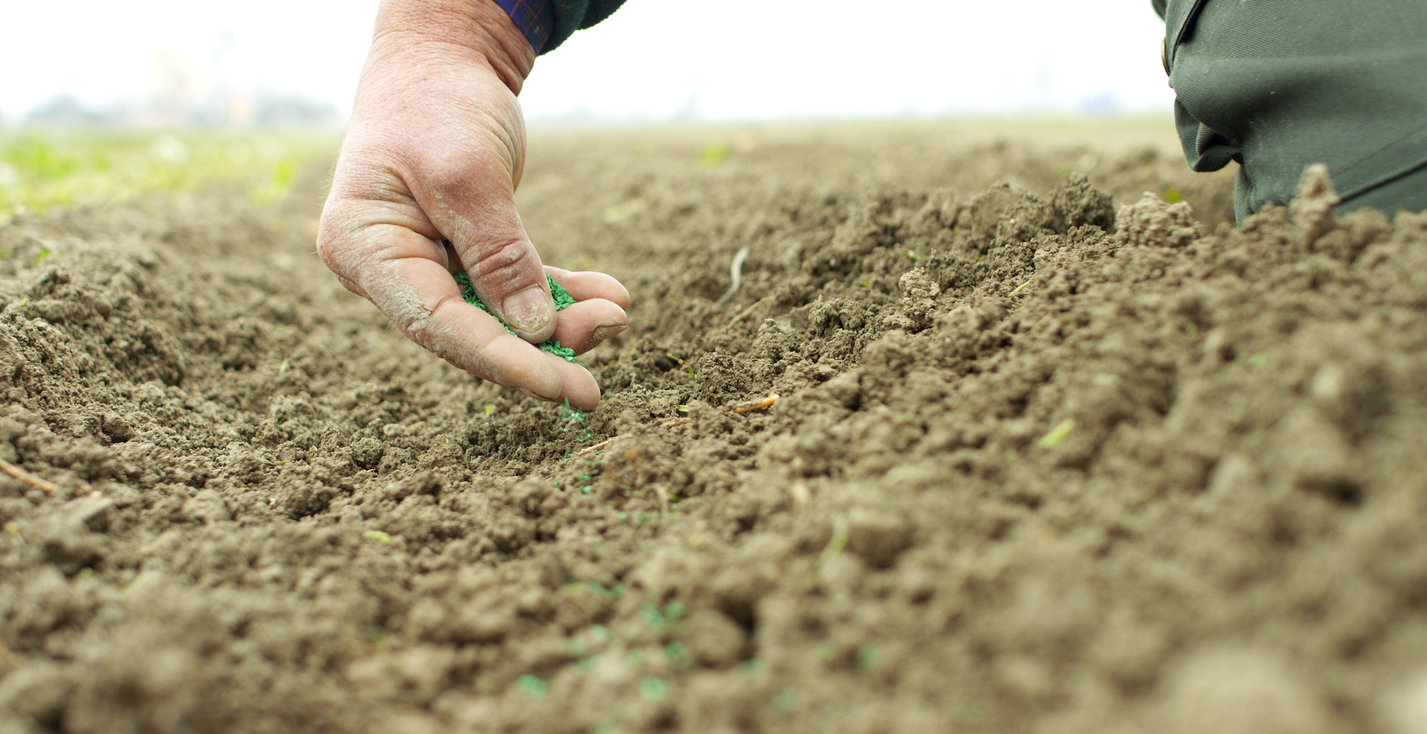Phosphorus and Lime Fertilization
Farmers are making plans for fall harvest, fertilization for phosphorus (P), and lime. Farmers need to minimize P losses at the edge of the field by following recommendations that maximize productivity while minimizing environmental impacts on water quality. Lime fertilization is less of an environmental issue but following certain guidelines is economical.
Avoid overloading soils. Soil test and follow tri-state fertilizer recommendations. For corn and soybeans, 20-40 PPM Mechlich-III is an acceptable P soil test level with 30-50 PPM for wheat and alfalfa. Where soil test levels are above 40 ppm Mehlich III, do not apply additional P in a corn-soybean rotation. Fertilizing soils above these levels increases risk of P in runoff and tile drainage.
Avoid winter application. Eliminate surface application of manure or fertilizer to frozen or snowcovered fields. Frozen ground is ground that is frozen so that tillage is not possible. Surface applied manure or fertilizer is subject to runoff events that may occur before the ground thaws and allows nutrients to bind to soil. Avoid surface application of fertilizer/manure. Surface applications of phosphorus are subject to higher loss if runoff producing rainfall events happen close to application. Placement of nutrient below the soil surface reduces P losses. Full width tillage has the potential to increased soil erosion and total phosphorus losses. Use strategies that place P below the surface with minimal soil disturbance. Use banded P applications at planting or the minimal amount of tillage needed to mix nutrients into the soil. Plant a cover crop immediately.
Minimize erosion. Appropriate conservation practices should be implemented to minimize erosion. Maintain 30% cover as crop residue/cover crop. Filter strips, grassed waterways and water diversion structures are appropriate tools. Live roots keep soil in place and tie up soluble nutrients. Strive to build soil health. Increase water infiltration by reducing soil compaction and improving soil structure which increase water retention, nutrient cycling, crop rooting capacity and crop yield.
Slow water movement. Surface water flows from fields directed to tile via standpipes should be converted to blind inlets. As P risk loss potential increases, use edge of field treatments which control water movement or treat water as it is leaving the site. Drainage water management control structures, in ditch treatments such as two stage ditches with tallgrass prairie species (switchgrass) and other stream practices (buffers, field strip strips, grass waterways) can reduce nutrient loading.
Know your field’s risk. Soil test P, field proximity to water and soil hydrologic class impacts edge of field losses of phosphorus. The NRCS Ohio Phosphorus Risk index provides an estimated risk of P loss and should be used to develop a Nutrient Management Plan for each field.
P Fertilizer. While DAP (18%N-46%P-0) and MAP (11%N-52%P-0) are generally “cheaper” sources of P fertilizer, they are both highly soluble and easily leached. An older source of P fertilizer, triple super phosphate (48% P) is less soluble but contains more impurities (calcium, sulfur, and other micronutrients) which breaks down slower but allows soil microbes to use it more efficiently. (P Recommendations from Culman, King, LaBarge, Lentz, Hoorman).
A good soil test analysis will tell whether a field needs lime (generally tons per acre) to raise the soil pH. Ohio Department of Agriculture (ODA) evaluates all liming sources sold commercially based on Effective Neutralizing Power (ENP) or soil acid neutralizing ability expressed as pounds per ton. The ENP value incorporates all quality components of lime: purity (calcium and magnesium content), particle size, and water content and allows producers to compare different liming sources.
To determine the amount of lime needed with the ENP value use the following equation: Tons of lime material = (Lime rate from soil test) * (2000/ENP). The actual cost of a lime source may also be used with ENP by the following equation: Cost ($/acre) = (Lime rate from soil test/ (ENP/2000)) * ($/ton).
Economics and the ability to evenly apply the material should be the primary factors in selecting a lime source. On sandy soils with low magnesium levels less than 50 ppm (100 lbs), dolomitic lime should be used because it costs less than other magnesium sources. Hi-Cal (calcitic) lime can be used on high clay soils with high magnesium soil test values.
Lime recommendations from soil testing laboratories assume a soil incorporation depth of eight inches. For no-till fields or lime left on the surface, assume 4-inch incorporation. Adjust your lime rate by the following equation: Lime rates for < 8 inches incorporation = (Soil test lime rate/8) * lime incorporation depth. (Lime info from Dr. Ed Lentz).
